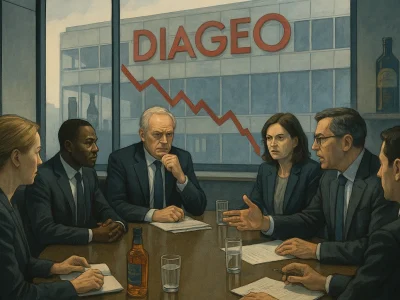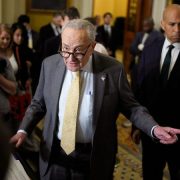
According to FactSet, over 90% of S&P 500 constituents have released their third quarter results.
Of these, 82% have beaten consensus forecasts on earnings per share, while 77% have exceeded revenue expectations.
That’s not too shabby. But as analysts typically lowball their predictions as the earnings season in question approaches, this doesn’t tell the full story.
Yet FactSet went on to report that, year-on-year, the blended earnings growth rate for the S&P 500 so far in Q3 was 13.1%.
If this were to hold for the rest of the earnings season, then it would mark the fourth consecutive quarter of double-digit earnings growth for the S&P.
That’s impressive. Of course, what matters now is how the fourth quarter pans out, and, what the forward guidance for the first quarter of 2026 looks like.
The earnings season may be drawing to a close, but the market never stops calculating, re-evaluating and forecasting.
What investors in the aggregate decide to buy or sell today depends on how they view the future.
As things stand, although things never stand still, third-quarter earnings have proved to be a big fat tailwind for the US stock market.
And that tailwind has also helped lift Asian Pacific, European and even the UK’s FTSE 100 to all-time highs.
There are other tailwinds as well. The US-China trade deal, much trumpeted by President Trump, yet which amounted to very little, is in the rear-view mirror. It is no longer a headwind.
The biggest concern, China’s restriction on the export of rare earths and critical minerals, has disappeared, possibly for the next twelve months.
Stock prices may discount the future, but they don’t look that far ahead.
For now, what was a concern is no longer an issue. In addition, the US government shutdown, officially the longest in history, appears to be coming to an end.
Past experience shows that investors really don’t care about shutdowns.
And as it now looks as if an agreement has been reached, another headwind disappears.
This shutdown was an irritation as it led to the postponement, or even cancellation, of some significant data releases, principally those which measure inflation and the state of the labour market.
This meant that the US Federal Reserve went into its monetary policy meeting at the end of October missing the best part of a months-worth of data, including Non-Farm Payrolls.
Given that this data series badly undershot market expectations in both July and August, it was unsurprising that the Fed pivoted to the ‘maximising employment’ side of their dual mandate, and away from ensuring ‘price stability’, or keeping inflation in check.
This change of emphasis led markets to price in two 25 basis point rate cuts before the year-end, one in October, which they got, along with a second in December.
Then Fed Chair Jerome Powell took investors by surprise when, in his press conference following the October cut, he said that another reduction in December was in no way a foregone conclusion.
Equities sold off sharply, as the probability of a cut prior to year-end went from 95% to 65% which is where it currently stands.
A bit of a headwind, one would think. But not really. For this is a bull market where even bad news morphs into good news if you consider it the right way.
After all, even the prospect of a ton of confusing economic data releases once the shutdown ends is largely ignored.
If the data is good, then there’s nothing to worry about, and investors can just carry on buying.
And if it’s bad, then investors can look forward to easier monetary policy.
Mr Powell may have said that a December cut wasn’t a foregone conclusion, but if the data is bad, it’s going to happen.
In the meantime, there was a bit of a hiccup in the tech space.
Stock market darlings, Nvidia and Palantir, took a pasting after Michael Burry, who anticipated the housing bust which triggered the Great Financial Crisis of 2008/9, announced he had large short positions in both stocks.
Suddenly, cracks appeared in the Artificial General Intelligence trade.
This wasn’t helped after Japan’s SoftBank announced that it had liquidated its Nvidia position. Game over? Far from it.
As everyone knows, Mr Burry was very early when he positioned himself for the housing bust.
And being too early is like being wrong. And SoftBank only sold out of Nvidia to increase its position in OpenAI, the owner of ChatGPT.
Headwinds become tailwinds and the rally continues. Until it doesn’t, of course.
(David Morrison is a Senior Market Analyst at Trade Nation. Views are his own.)
The post Headwinds and tailwinds appeared first on Invezz










